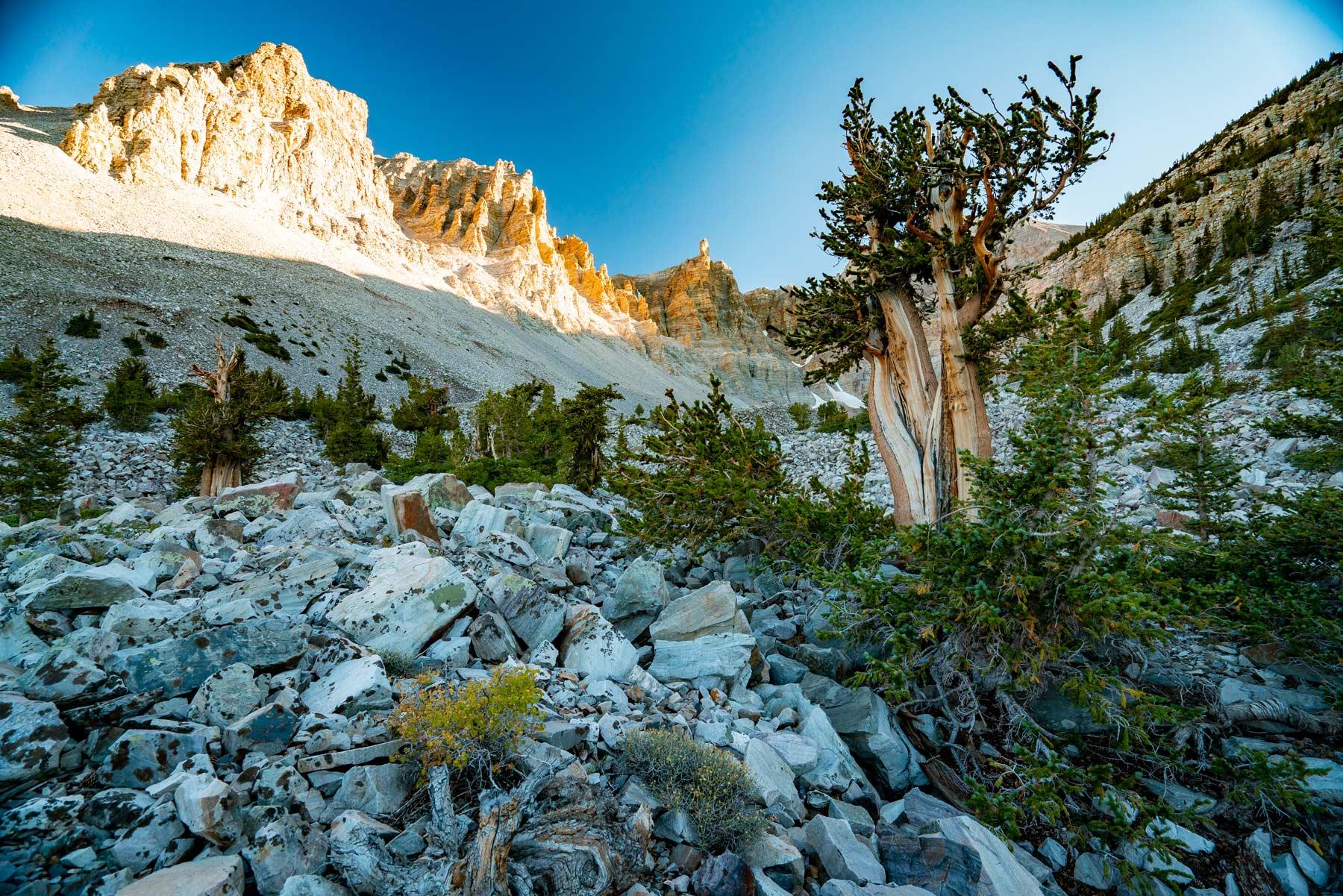
Article Summary: Nevada National Parks
Nevada National Parks, there’s so much more to this beautiful state than Las Vegas. In this article, we’ll go over all of the incredible national park sites in the great state of Nevada.
There are 7 national park sites for you to see on your next visit to the Silver State.
These Nevada national parks include amazing historic sites, incredible monuments, beautiful parks, legendary trails, and so much more.
I’ve been to so many of these amazing places since retiring from teaching in 2018. Did I mention that I taught history? I spent a lifetime teaching about the history behind these momentous sites. Then I got to see them firsthand. And now I’m sharing the stories of these incredible places with you. It doesn’t get any better than that!
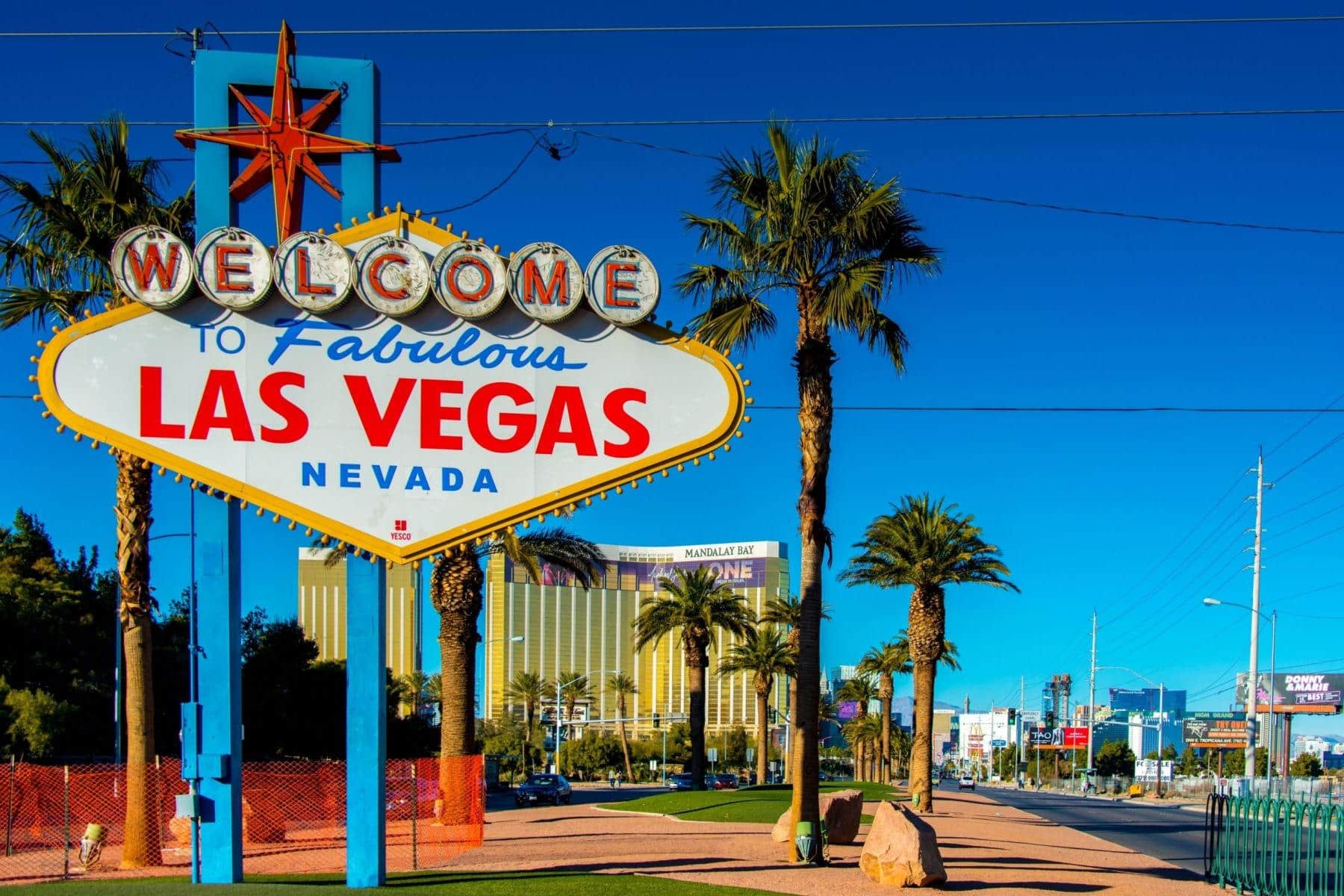
So, What Is A National Park?
To be clear, this list includes national park sites (as in sites managed by the National Park Service) as well as full-fledged national parks. To learn more about the difference between the various National Park Service designations check out our article that explains everything!
If you’re planning a trip to the Silver State then one book that I highly recommend is: Nevada Bucket List Adventure Guide: Explore 100 Offbeat Destinations You Must Visit!
Now lets go ahead with the 7 wonderful reasons why you’ll want to make Nevada (and not just Las Vegas) your next vacation destination.
Table Of Contents: Nevada National Parks
Nevada National Parks
- Best Nevada National Parks
- More Nevada National Parks
- More Nevada National Parks
- Check Out Our Saguaro National Park Film
- Nevada National Parks FAQ
- Why Trust Us About Nevada National Parks?
- Meet The Parks Brothers
- Map Of Nevada National Park Sites
- List Of Nevada National Park Sites
- We Hope You’ll Follow Our Journey
Best Nevada National Parks
1. California National Historic Trail
We begin our exploration of the Nevada National Parks with a historic trail named after Nevada’s neighbor to the west. Of course I’m referring to the California National Historic Trail.
The California National Historic Trail was established in 1992 as part of the National Trails System Act. The trail traces the routes used by pioneers who traveled to California during the mid-19th century in search of gold and a better life.
It spans over 5,000 miles and covers several states, including Missouri, Nebraska, Wyoming, Idaho, Nevada, and California.
The trail is significant for its role in shaping the history and culture of the American West.
Today, the California National Historic Trail serves as a symbol of American pioneer spirit and provides opportunities for outdoor recreation and historical education.

What It A National Historic Trail?
What is a national historic trail? That’s a great question.
A National Historic Trail is a trail designated by the United States government as part of the National Trails System. These trails are significant for their historical, cultural, and/or recreational value and are protected and managed for public use.
National Historic Trails commemorate major routes of travel, migration, or communication and often follow routes used by pioneers, American Indians, or military personnel.
The trails can include a variety of sites and landscapes, including historic structures, landmarks, natural features, and museums.
Some of the more well-known National Historic Trails include the Oregon, California, and Pony Express Trails.

The California Historic Trail In Nevada
In Elko, Nevada, you can visit the California Interpretive Trail Center. It offers dioramas and interactive exhibits that immerse the visitor in the trail experience of those who endured the 2,000 mile trek.
In Elko can also see Hot Hole. It named after its round and reportedly deep shape. This geologic wonder was noted in reports, dated as early as the 1830s, by explorers that passed through the area. Later, emigrants and miners following the same paths, which were now known as the California Trail, wrote about the Hot Hole in their journals.
There are other historic sites in Nevada and you may want to reference the NPS Website to determine which ones are of interest to you.
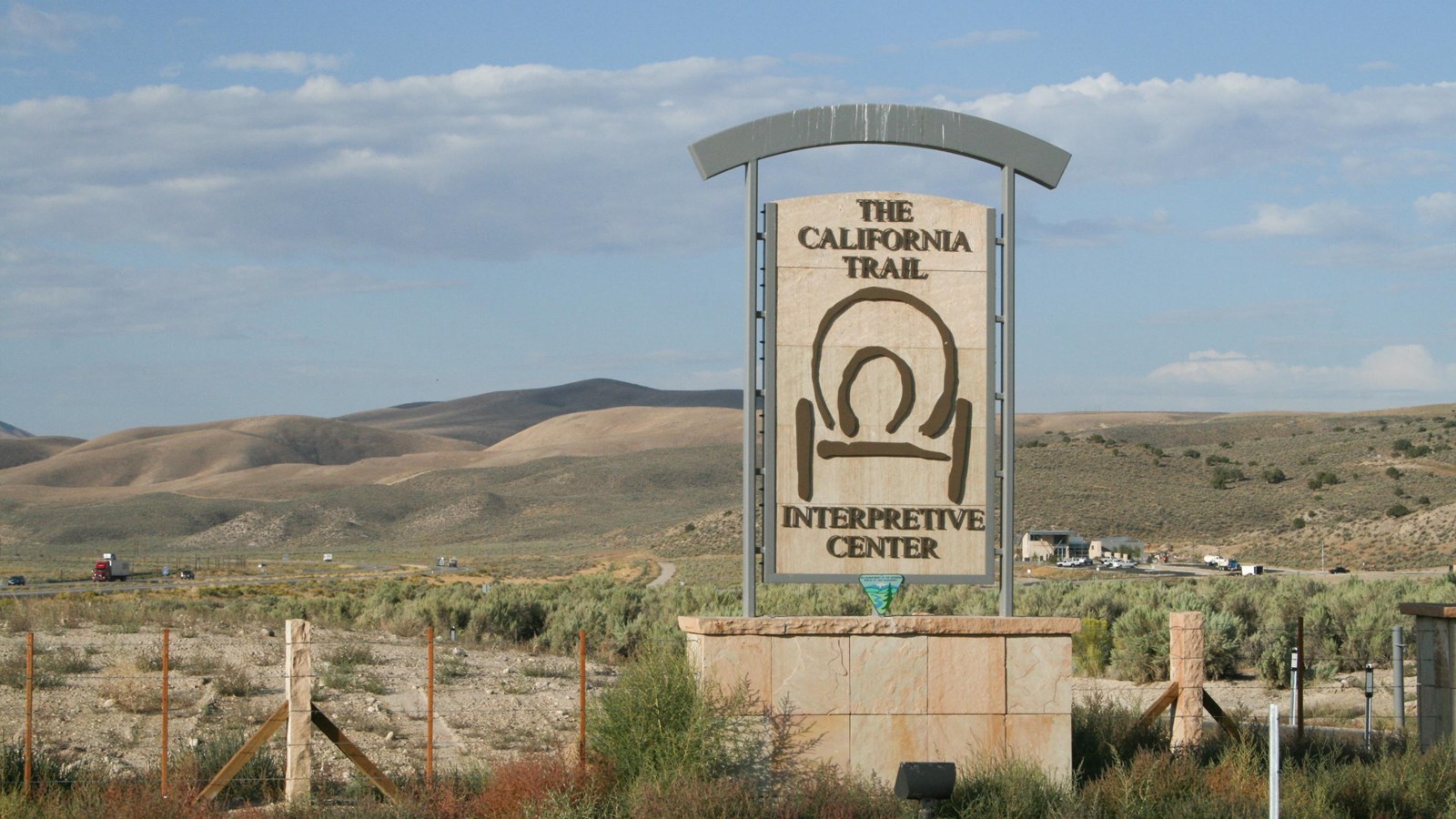
RELATED: 24 EPIC Arizona National Parks (Ultimate Guide + Photos)
2. Death Valley National Park
My Favorite Resources: Guide / Map / Guidebook / Things to Do / Facts / Camping / Where to Stay
While Death Valley National Park is not typically associated with the Nevada National Parks, it does happen to be one of them.
Situated on California’s southeastern border with Nevada, Death Valley National Park spans over 5,000 square miles of otherworldly vistas. The largest national park in the continental United States, Death Valley is a park for superlatives.
Death Valley is the hottest place on earth, the lowest place in North America, and the driest place in the United States. It is also the largest National Park outside of Alaska.
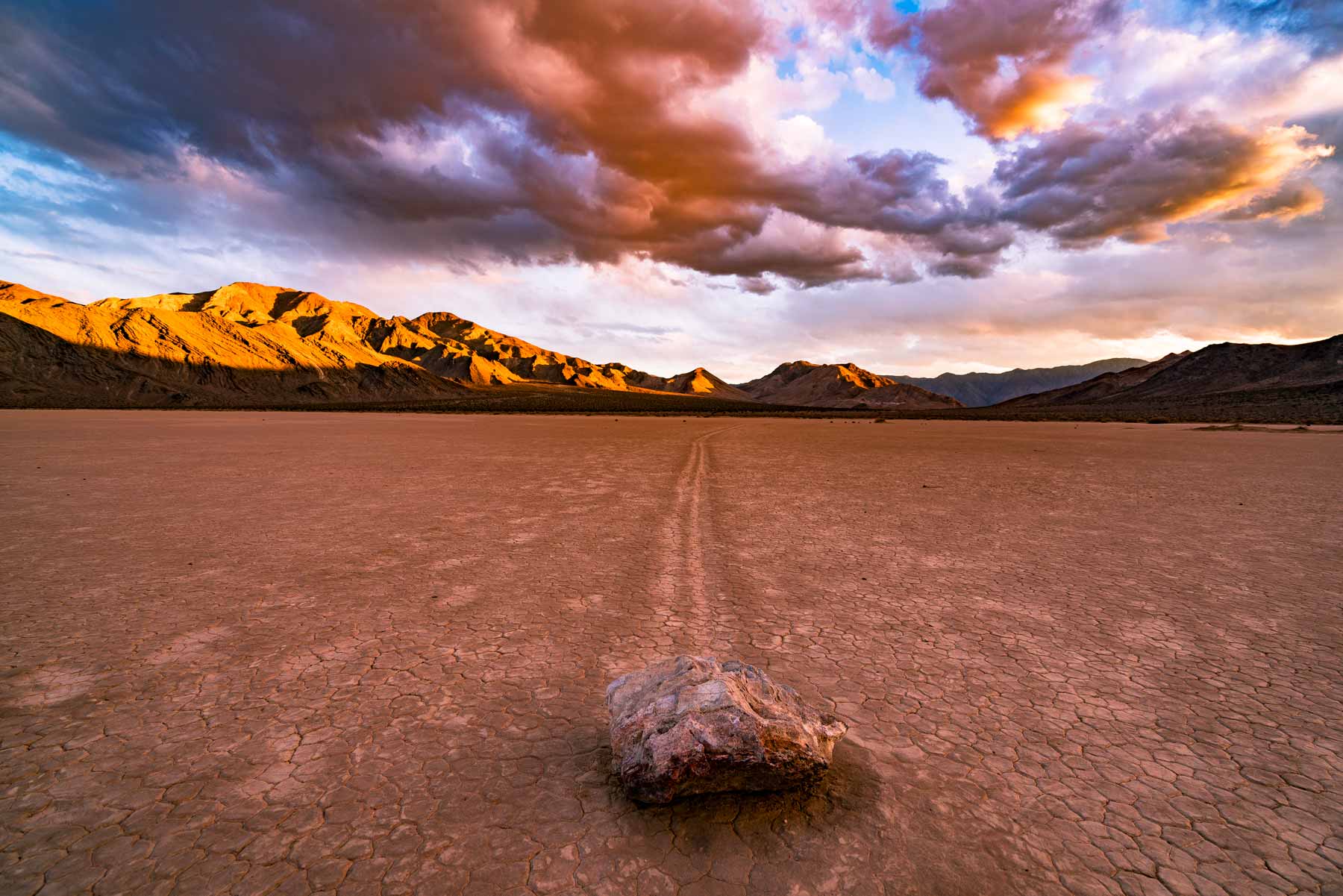
If you’re interested in learning more, check out our article on the best things to do in Death Valley.
Things to See in Death Valley
Massive slanted valleys that go on forever and seem to lack only the crashed spaceship in the distance, snow-capped mountains, a year round waterfall (insane, right?), expansive Joshua Tree forests, abandoned mines, conifer groves, and some of the most stunning dune fields in North America comprise the park with the most morbid name.

If you’re visiting the park be sure to check out our full Death Valley National Park Guide!
Eureka Dunes
Located in the remote Eureka Valley and situated at 3000ft elevation, Eureka Dunes is the most stunning dune field (I think) of the five in Death Valley National Park. Eureka Dunes are the tallest in California and perhaps the tallest in North America.
What makes this dune field even more stunning is the backdrop of the massive Last Chance Mountains. As if that isn’t enough to entice one to visit, did I mention they sing?
Yes, these dunes sing underneath your feet under the right conditions with a bassy resonance resembling that of a pipe organ.
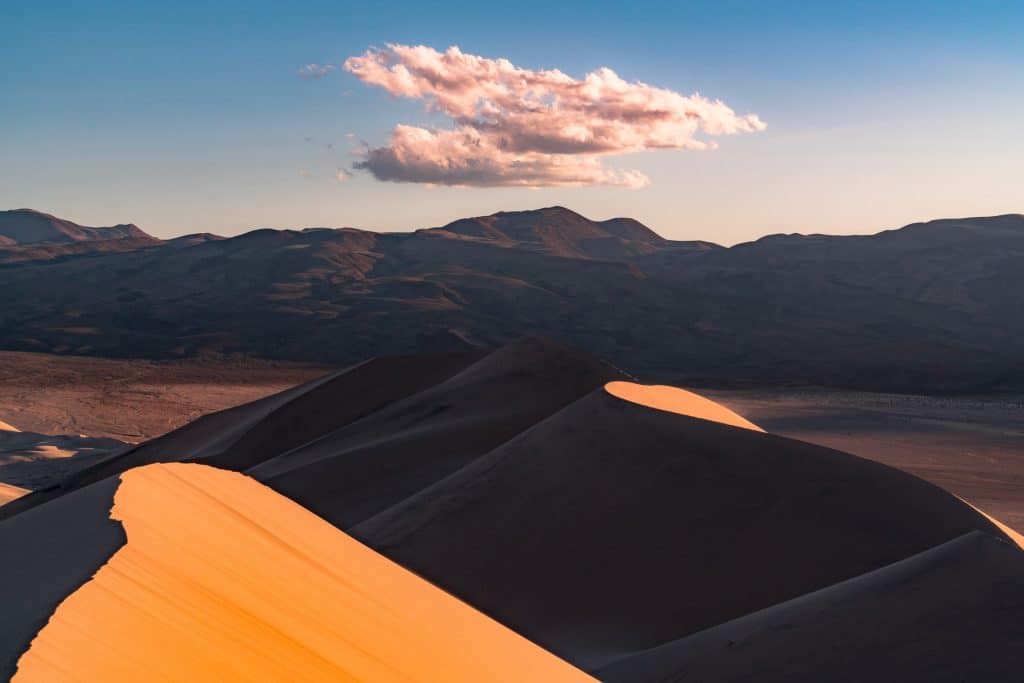
CHECK OUT: 15 FASCINATING Death Valley National Park Facts You Probably Didn’t Know
Badwater Basin
Badwater Basin is the lowest point in North America at 282ft below sea level. This salty wonderland features dazzling geometric shapes and record temperatures in the Summer.
Visitors can park at the Badwater Basin parking and walk out across the salt flats to the end of the boardwalk and out onto the salt itself which is a truly amazing experience.
Badwater Basin Hike: Most visitors just hike out a few steps beyond the short boardwalk but to truly get a sense of the scale of the salt flats one can do the entire 1.8mile path.
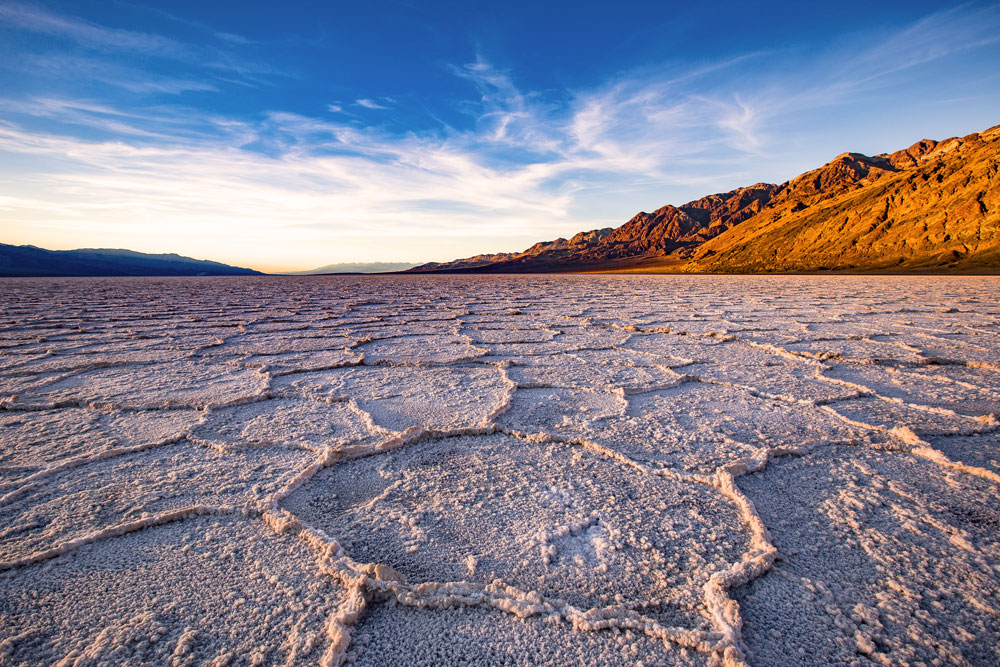
Zabriskie Point
Zabriskie Point is one of the most iconic locations in all of Death Valley National Park. This location is perhaps *the* best place in the park to watch a sunrise. This iconic location features panoramic views of the valley and stunning rock formations.
As one of the parks most popular locations crowds here can be quite large especially during the popular seasons. Be sure to show up early for sunrise to get a good spot!
There is a short, steep paved pathway that takes visitors from the parking lot to the viewpoint.
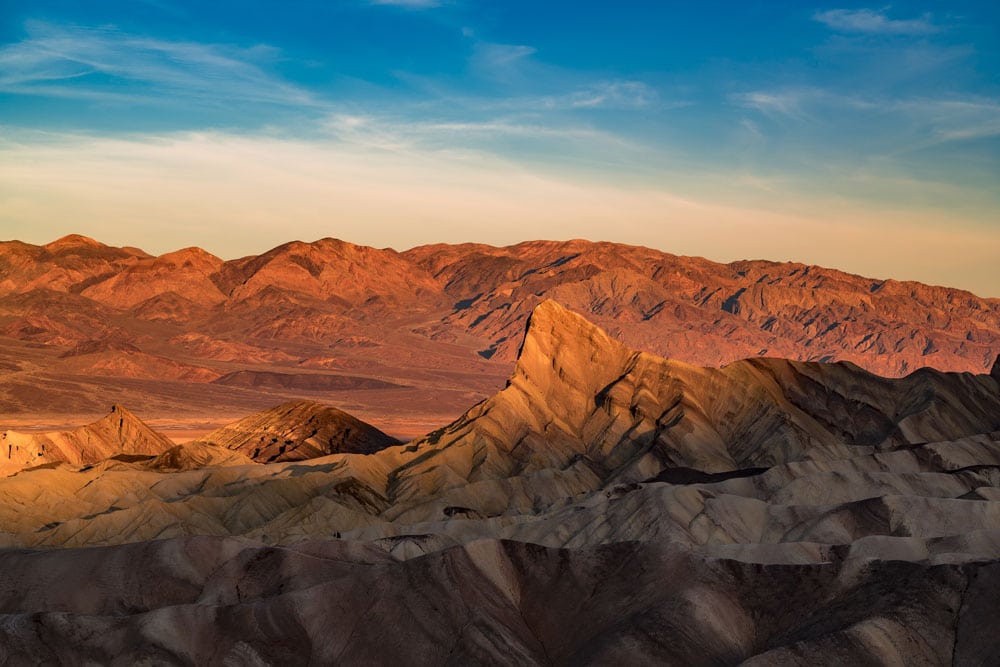
Watch Our Award-Winning Death Valley Video
In the remote far reaches of the Mojave Desert lies the largest national park in the continental United States. Hidden here in the hottest place on earth is another world full of diverse life and colorful landscapes. Join us as we take life to the extreme and explore Death Valley.
Filmed primarily in 8K. To make this film we spent weeks in California’s (& Nevada’s) Death Valley National Park, mostly in February and March when the temperatures are more manageable. We traversed hundreds of miles hiking most of the parks trails to capture the park like never before.
As the largest park in the contiguous United States, Death Valley is massive – over 3 million acres! We visited destinations like: Eureka Dunes, The Racetrack Playa, Mesquite Dunes, Zabriskie Point, Charcoal Kilns, Aguereberry Point, Badwater Basin, Darwin Falls, and more.
More Nevada National Parks
3. Great Basin National Park, Nevada
My favorite among the Nevada National Parks is Great Basin National Park.
A trip to Great Basin National Park is a wonderful way to sample the stunning diversity of the larger Great Basin region. Great Basin is a park which offers a variety of different outdoor (and indoor) activities.
Let’s start with the great indoors. The Lehman Caves were discovered by a miner and rancher from Ohio named Absalom Lehman. He settled in the area in the 1860s. Lehman discovered the caves in 1885 (ergo the name).
These caves are part of a cavern system containing many beautiful limestone formations. The caves are visited on guided tours, for which tickets need to be purchased, preferably in advance, but the park as a whole is free to enter.
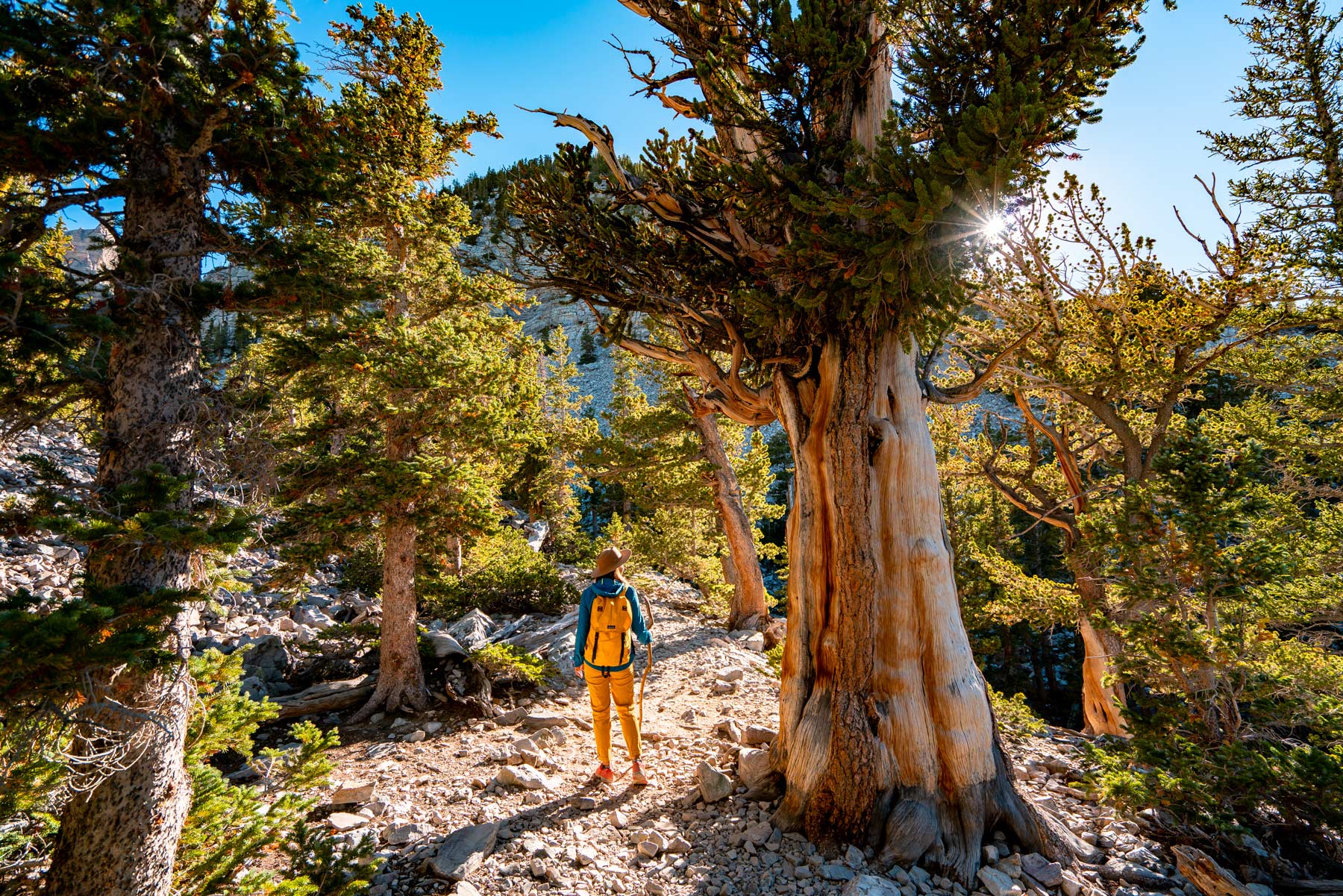
Camping At Great Basin
Great Basin has five campgrounds available for visitors although some campgrounds are closed seasonally due to weather. And this is one park where you will want to stay overnight.
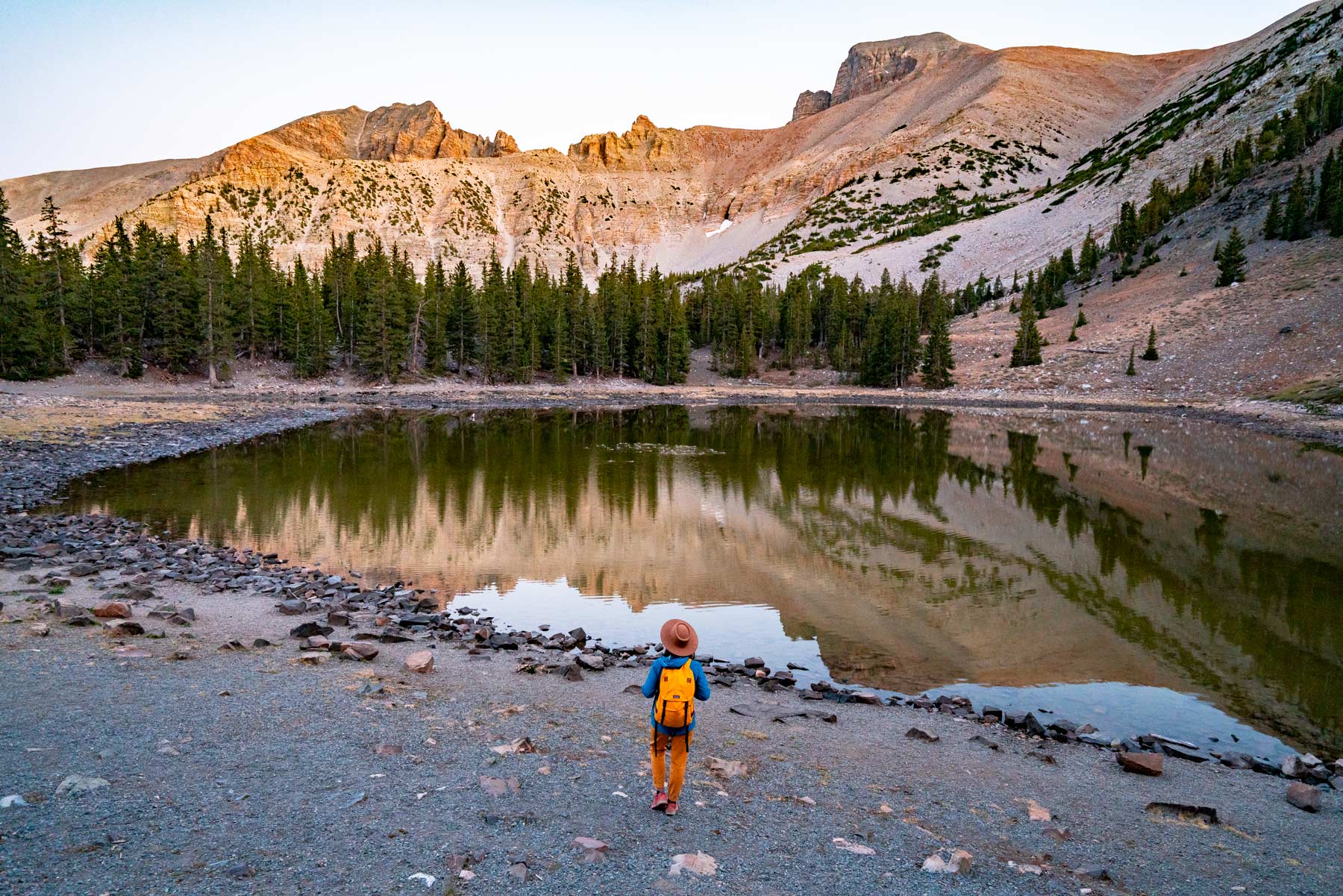
Why you might ask? On a clear, moonless night in Great Basin National Park, thousands of stars, numerous planets, star clusters, meteors, man-made satellites, the Andromeda Galaxy, and the Milky Way can be seen with the naked eye. Imagine that!
4. Lake Mead National Recreation Area
When it comes to great recreational areas among the Nevada National Parks you cannot do better, in my opinion, than Lake Mead National Recreation Area.
Lake Mead is the largest reservoir in the United States in maximum water capacity and one of Nevada’s many national park sites. It is located on the Colorado River about 24 mi (39 km) from the Strip southeast of Las Vegas, Nevada, in the states of Nevada and Arizona.
Formed by the Hoover Dam, Lake Mead is an impressive place: 112 miles long when the lake is full, 550 miles of shoreline, around 500 feet at greatest depth, 247 square miles of surface, and when filled to capacity, 28 million acre-feet of water.
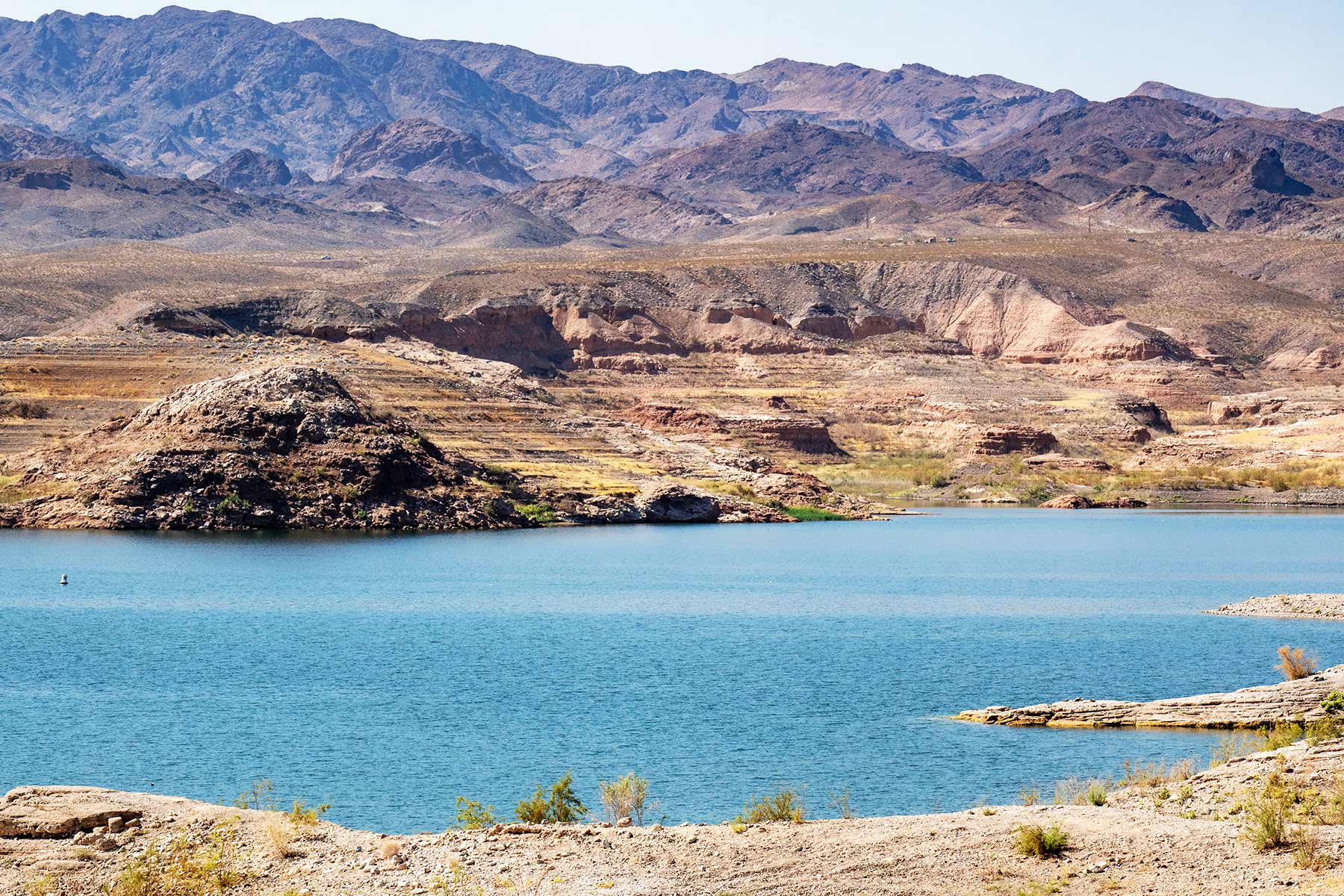
Things To Do At Lake Mead
Visitors to Lake Mead National Recreation Area can participate in a variety of outdoor activities, including:
- Boating: The lake offers opportunities for power boating, sailing, kayaking, and canoeing.
- Fishing: The lake is stocked with a variety of fish, including largemouth bass, striped bass, and catfish, making it a popular destination for anglers.
- Swimming: There are several beaches around the lake that are popular for swimming and sunbathing.
- Hiking: The recreation area has several trails that offer scenic views of the lake and surrounding desert landscapes.
- Camping: There are several campgrounds located within the recreation area that offer campsites for tents and RVs.
- Scenic drives: Visitors can take scenic drives around the lake to enjoy the stunning views of the surrounding desert landscapes.
- Wildlife viewing: The recreation area is home to a variety of wildlife, including bighorn sheep, desert tortoises, and many bird species, making it a great destination for wildlife watching.
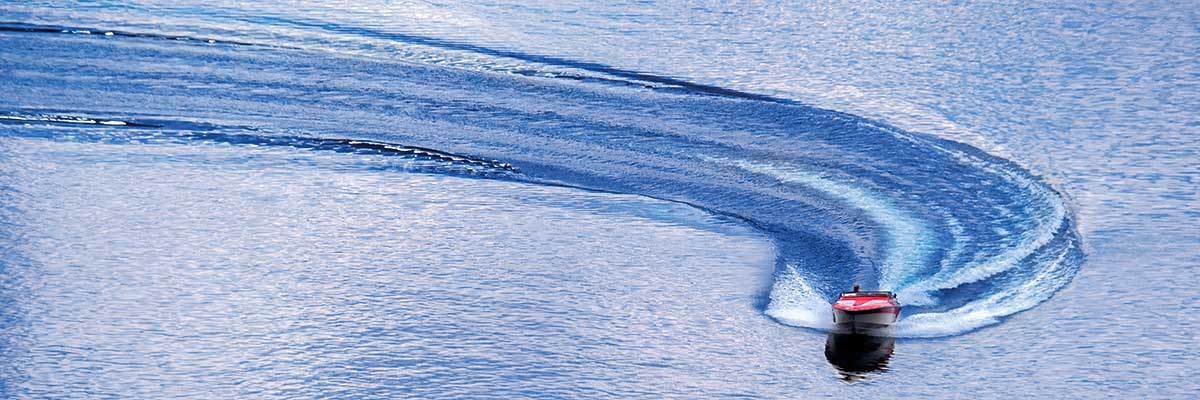
Hiking Trails At Lake Mead
There are many hiking trails in Lake Mead and Lake Mohave. The best season for hiking is November through March when temperatures are cooler.
Some of my favorite hiking trails include:
- The Historic Railroad Trail which is a wide and flat gravel trail consisting of five tunnels that lead to Hoover Dam.
- The Rivers Mountain Loop which is a 12-foot-wide paved path that surrounds the River Mountains, connecting Lake Mead National Recreation Area, Hoover Dam, Henderson, Boulder City and the rest of the Las Vegas Valley and is 34 miles in total length.
- Redstone where hikers can wind through large, red sandstone rocks and learn about the geology of the area. Interpretive signs are provided at the trailhead and picnic area.
- Lake View which provides opportunities to take in the beautiful, mountainous landscape with views of the harbor, Lake Mohave and Telephone Cove.
If you prefer biking to hiking bicyclists are welcome to ride at Lake Mead National Recreation Area on park roads and on routes designated for bicycle use.
5. Old Spanish National Historic Trail
Nevada National Parks offers visitors not one, but two great trails to explore.
The Old Spanish National Historic Trail is a historic trade and transportation route that was established in the late 1700s and early 1800s between Santa Fe, New Mexico and California.
It was used by Spanish traders, missionaries, and military personnel to transport goods and spread Christianity to the indigenous peoples of the Southwest and California.
The trail was significant for its role in the expansion of the Spanish Empire into the American West, as well as for its influence on the cultural and economic development of the region. The trail followed a network of existing indigenous trade routes and crossed several deserts, mountains, and rivers, making it a challenging journey.
Today, the Old Spanish National Historic Trail is recognized as a National Historic Trail by the United States government and is protected and managed for public use. The trail provides opportunities for outdoor recreation, historical education, and cultural appreciation.
It is a symbol of the early Spanish presence in the American West and the role of trade and transportation in shaping the region’s history and culture.
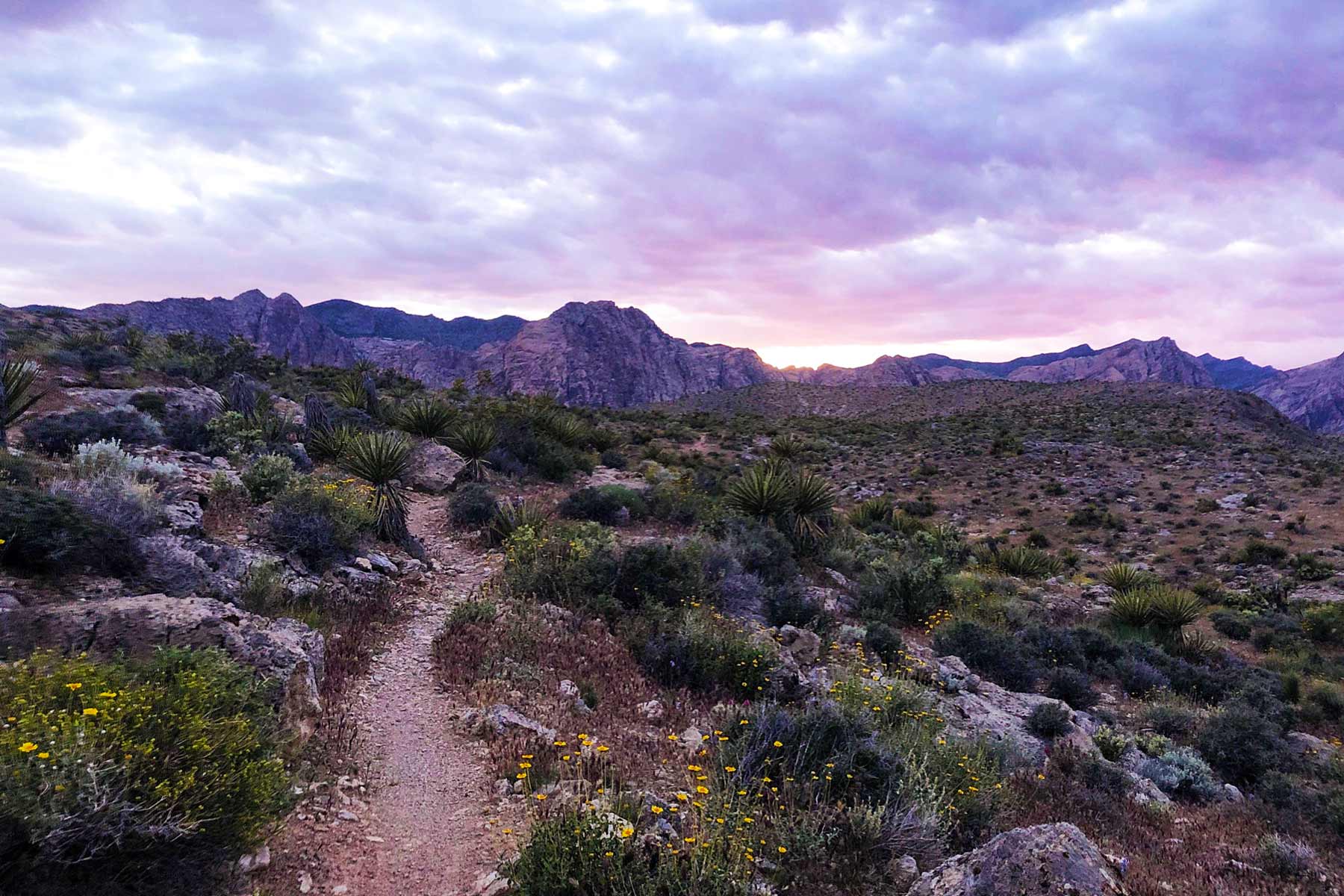
RELATED: 18 SURPRISING New Mexico National Parks
More Nevada National Parks
6. Pony Express National Historic Trail
The Pony Express National Historic Trail was a mail delivery system that operated from 1860 to 1861 in the United States.
The trail was established to provide fast mail service between Missouri and California, covering a distance of over 1,800 miles and crossing several states, including Missouri, Kansas, Nebraska, Colorado, Wyoming, Utah, Nevada, and California.
The Pony Express was established during a time of great change and expansion in the American West, as gold was discovered in California and people from around the world rushed to the region in search of wealth and a better life.
The trail was significant for its role in facilitating communication and commerce between the growing settlements of the West and the rest of the country.
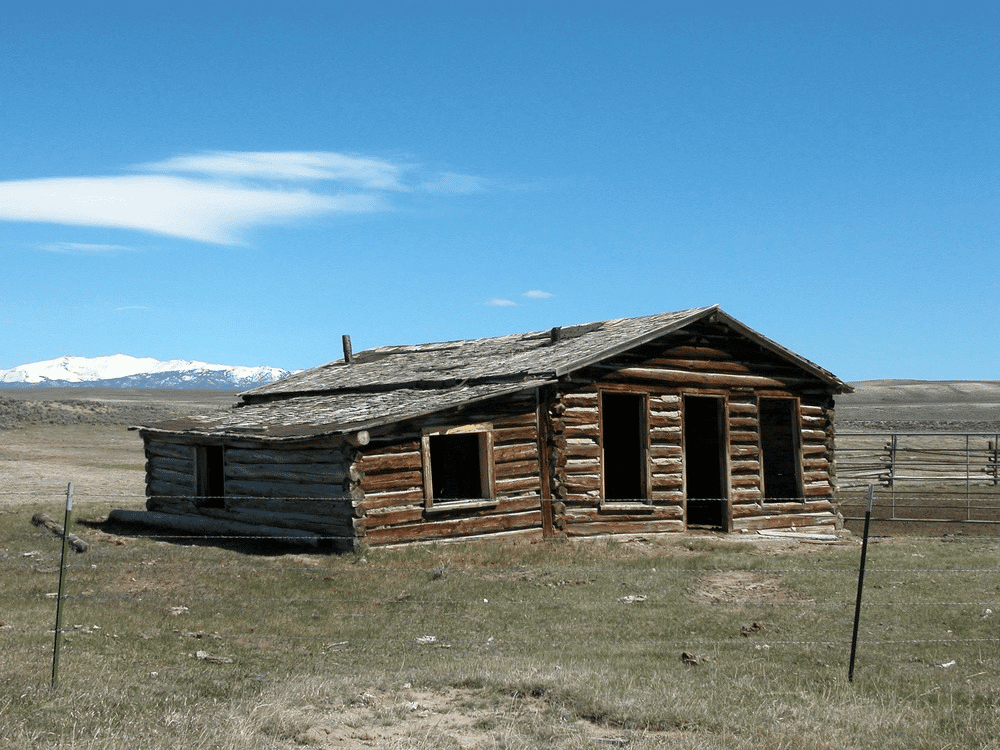
It Was A Daring & Innovative Venture
The Pony Express was a daring and innovative venture, relying on a network of horse-mounted riders and relay stations to deliver mail across the rugged and often dangerous terrain of the American West.
The riders faced many challenges, including hostile Indian attacks, harsh weather conditions, and rugged terrain, but they were able to deliver mail quickly and reliably, making the Pony Express a symbol of American ingenuity and determination.
Today, the Pony Express National Historic Trail is recognized as a National Historic Trail by the United States government and is protected and managed for public use.
The trail provides opportunities for outdoor recreation, historical education, and cultural appreciation, and is a symbol of the spirit of adventure and the pioneering spirit that helped shape the American West.
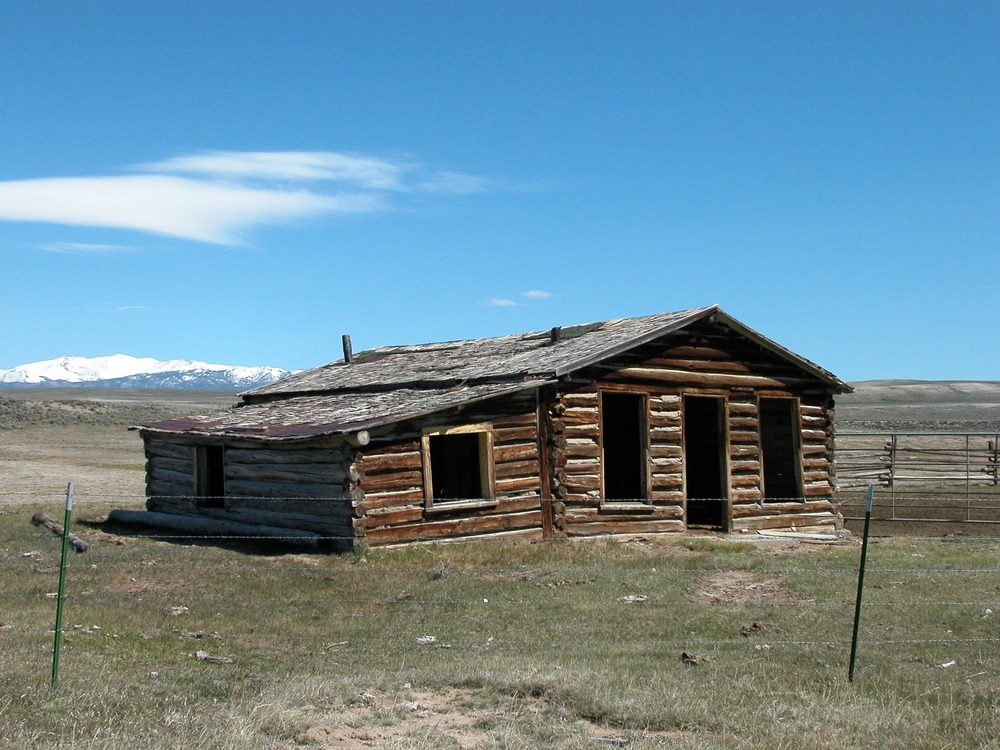
Retracing The Pony Express
One hundred and fifty years later, you can visit trail traces, visitor centers, museums, hiking trails, historic structures and forts related to the Pony Express National Historic Trail.
The trail crosses eight states following the journey taken by dozens of young riders and hundreds of horses between St. Joseph, Missouri and Sacramento, California.
The best news of all, however, is that you won’t have to change horses every ten miles. There are auto tour routes, GIS interactive maps and a Back-Country Byway.
Or, you can simply use your cellphone (there’s an app for every thing these days!) to chart a course across the Pony Express National Historic Trail.
Isn’t progress wonderful!

7. Tule Springs Fossil Beds National Monument
As a former World History teacher, I realized that there’s old and then there’s old. Nevada National Parks include history of the more recent past as well as the ancient past. A case in point is Tule Springs Fossil Beds National Monument.
Tule Springs Fossil Beds National Monument is a protected area located in Nevada, USA, that was established in 2014 to protect and preserve significant fossil deposits from the late Pleistocene epoch.
The area is known for its rich fossil beds, which contain the remains of extinct animals, including mammoths, horses, camels, and bison, as well as plants and other organisms that lived in the region during the last Ice Age.
The fossil beds at Tule Springs were formed in a series of springs and wetlands that existed in the region during the late Pleistocene. Over time, the remains of animals and plants that lived in the area became buried in sediment and were preserved as fossils.
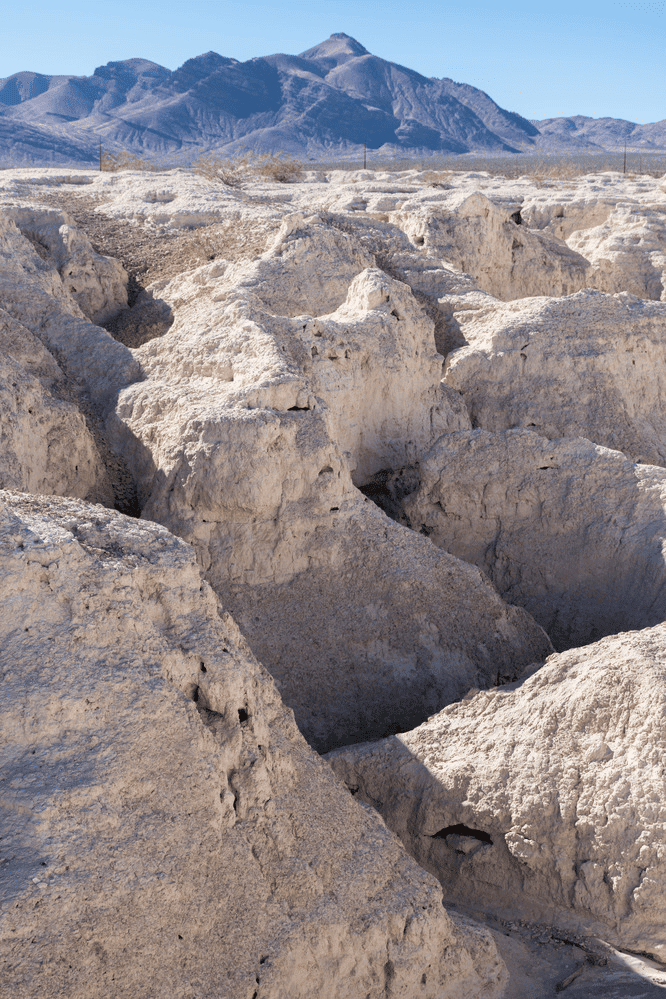
An Important Site For Scientific Research
Tule Springs has been an important site for scientific research and discovery, and has helped to expand our understanding of the late Pleistocene environment and the animals that lived in the region.
The fossils found at Tule Springs are also important for their role in telling the story of the late Pleistocene and the ancient environment of the American West.
Today, Tule Springs Fossil Beds National Monument is managed by the National Park Service and is open to the public for hiking, wildlife watching, and educational opportunities.
The monument is a significant resource for scientific research and a valuable resource for the public, providing opportunities to learn about the rich geological and paleontological history of the American West.

Check Out Our Saguaro National Park Film
SAGUARO is the culmination of weeks spent filming in one of the most unique and vibrant deserts in the world, the Sonoran Desert.
Encompassing over 90,000 acres, Saguaro National Park preserves vast forests of the iconic saguaro cactus, rare wildlife, and majestic landscapes.
Nevada National Parks FAQ
Valley of Fire State Park. Renowned around the world for the arresting and awe-inspiring rock formations after which it is named, Valley of Fire State Park is one of Nevada’s top tourist attractions. Set just 80 kilometers to the northeast of Las Vegas, it lies not far from Lake Mead and the border with Arizona.J
The following is a list of the must-see historic sites in Nevada:
Death Valley National Park
Hoover Dam
Atomic Museum
Pony Express National Historic Trail
Tule Springs Fossil Beds National Monument
Virginia City Historic District
Lovelock Cave
Nevada State Capitol
Stokes Castle
Ward Charcoal Ovens
Why Trust Us About Nevada National Parks?
We’re Jim Pattiz and Will Pattiz, collectively known as the Pattiz Brothers (and sometimes the Parks Brothers) and we absolutely LOVE the national parks.
You should probably know that we don’t just make this stuff up out of thin air. We’ve spent our entire adult lives exploring and filming America’s national parks and public lands.
We’ve worked with the National Park Service, the Department of Interior, USDA, and the U.S. Forest Service for years creating films on important places and issues. Our work has been featured in leading publications all over the world and even some people outside of our immediate family call us experts on the national parks.
Meet The Parks Brothers
Map Of Nevada National Park Sites
List Of Nevada National Park Sites
- California National Historic Trail
- Death Valley National Park
- Great Basin National Park
- Lake Mead National Recreation Area
- Old Spanish National Historic Trail
- Pony Express National Historic Trail
- Tule Springs Fossil Beds National Monument
We Hope You’ll Follow Our Journey

Our goal here at More Than Just Parks is to share the beauty of America’s national parks and public lands through stunning short films in an effort to get Americans and the world to see the true value in land conservation.
We hope you’ll follow our journey through the parks and help us to keep them the incredible places that they are. If you’re interested in joining the adventure then please sign up below!
And a bonus! Tips for Visiting a National Park Responsibly
Permit Systems and Reservations
Check to see if the national park you’re visiting has a permit or reservation system in place before visiting. As parks become increasingly crowded more has to be done to safeguard them which means controlling the hundreds of millions of people who visit these places each year.
Popular national parks with reservation systems of some kind include Yosemite, Yellowstone, Zion, Rocky Mountain, Glacier, Arches, Acadia, Denali, and more.
Want Less Crowds? Try a National Forest!
Try visiting a national forest while you’re on your trip to avoid the crowds. There are 155 national forests in America, many of which are equally as beautiful as the national parks they neighbor and only see a fraction of the visitors.
For example, try the Flathead National Forest next to Glacier National Park, the Bridger-Teton next to Grand Teton, and the Dixie which borders nearly all of the Utah National Parks.
Practice Safety, Seriously
National parks are amazing but wild places so it is essential to practice basic safety while visiting them. Every year people die while vacationing in national parks. This is easily avoided by:
- Sticking to trails
- Checking the weather before going out on a hike
- Maintaining a safe distance between wildlife which means at least 25 yards from most wildlife and 100 yards from predators
- Avoid ledges with steep drop offs

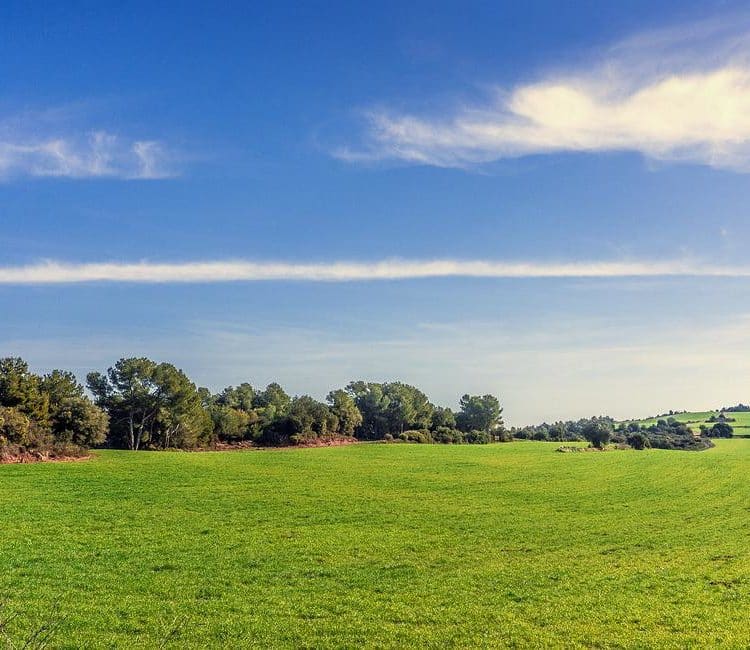

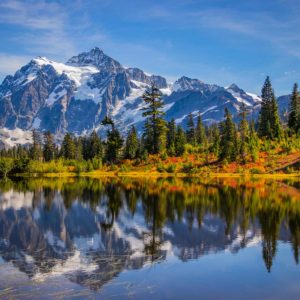

Leave a Reply